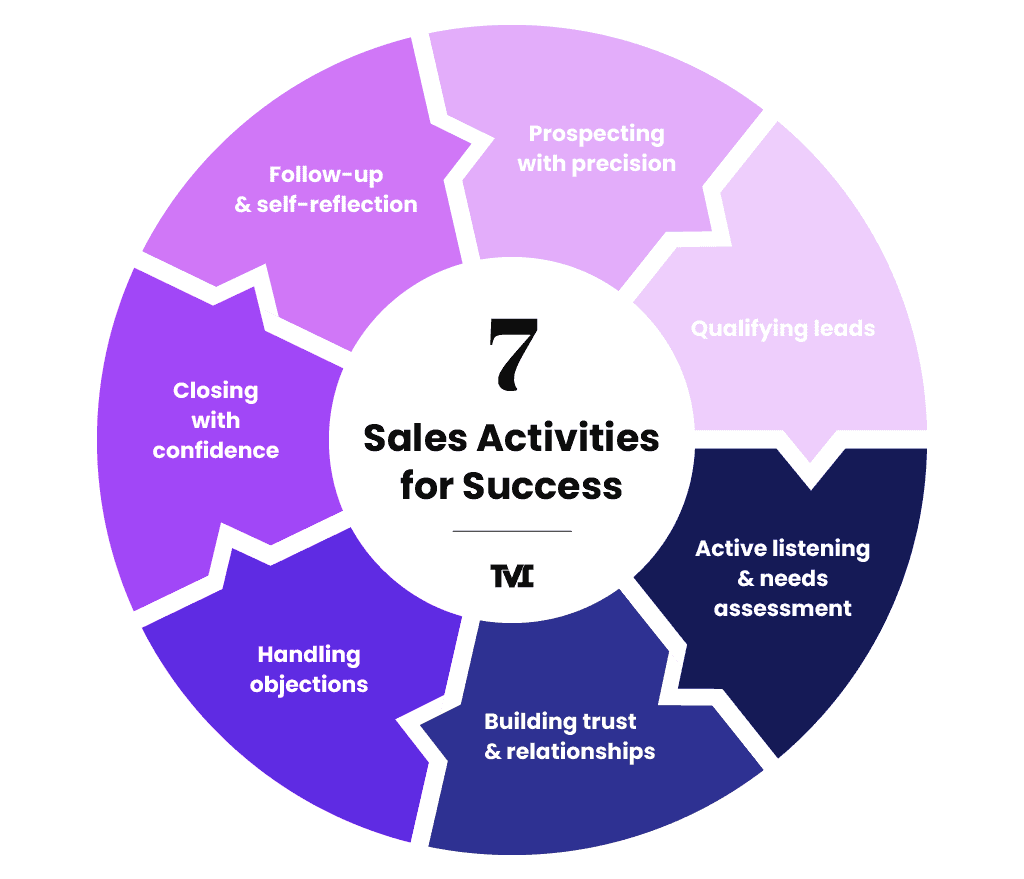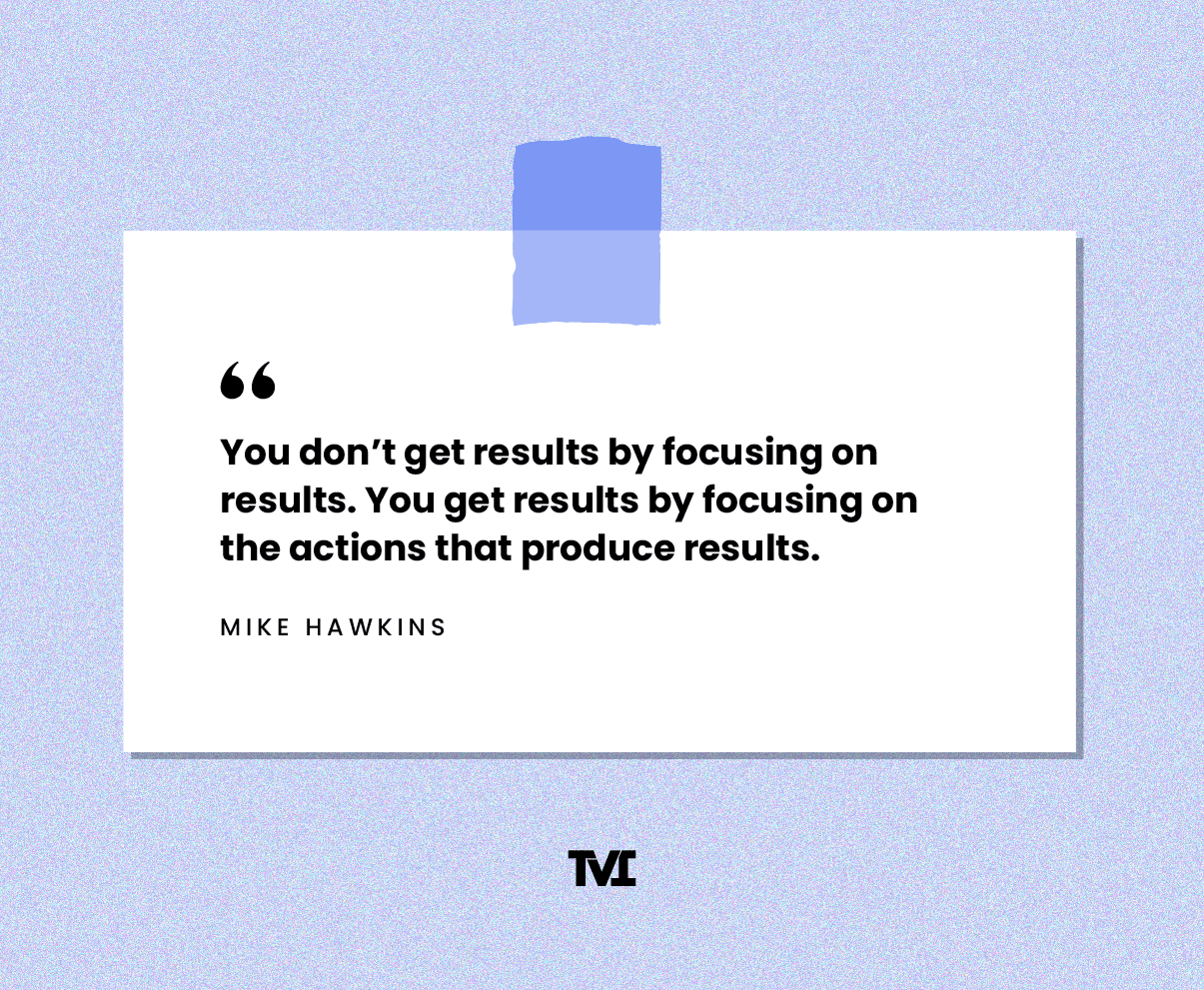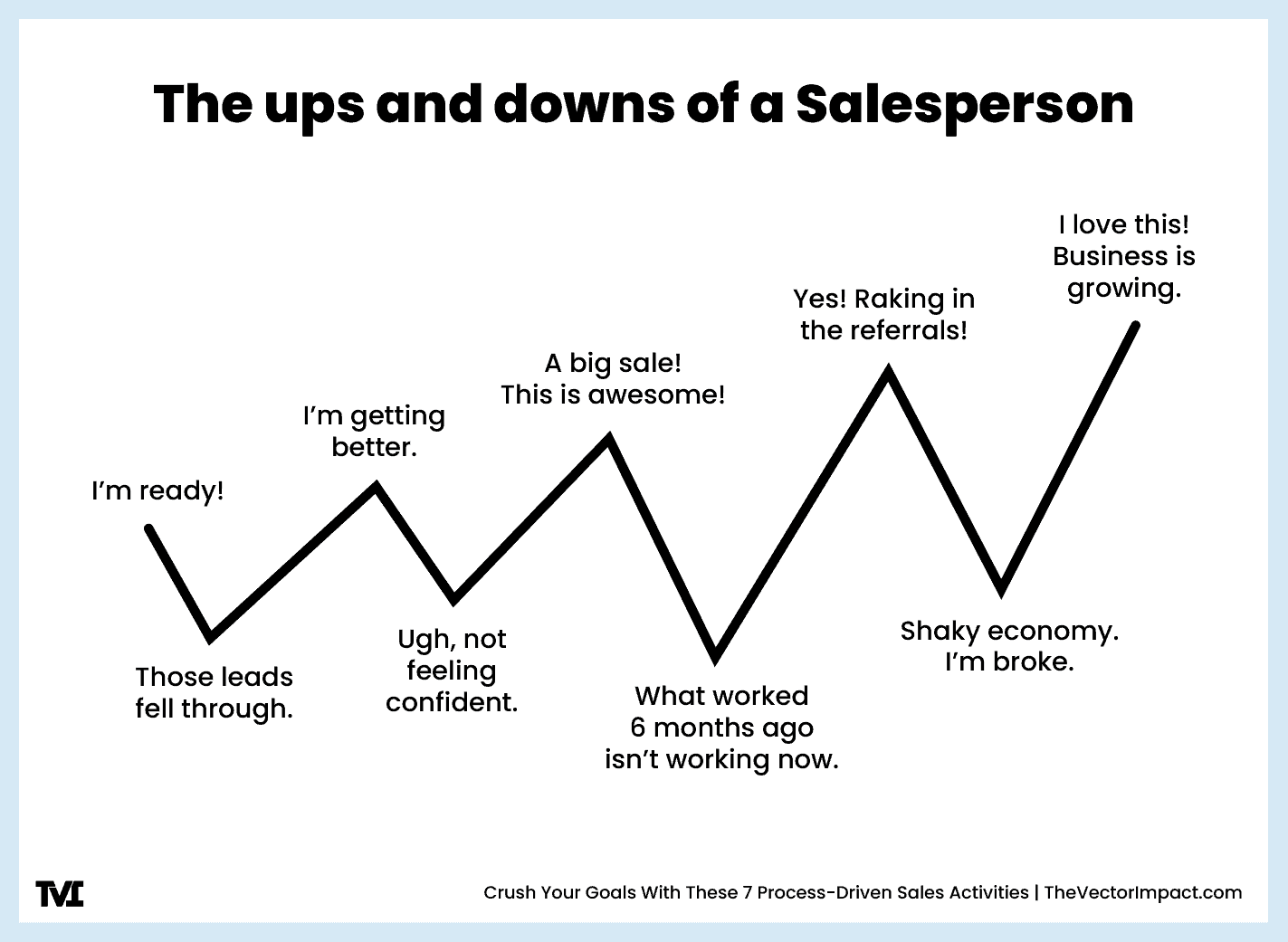Table of Contents
If I were to tell you that 90% of the highest-performing sales companies employ the same simple sales strategy, you’d immediately drop everything and implement it, right?
Well, this strategy exists, and it’s a formal, guided sales workflow.
It seems easy enough: Stick to the script and you’ll be rewarded with high numbers. You might even think that you already have the perfect sales routine.
But if you’re struggling to get results that match your efforts, keep on reading to master the sales activities that breed both consistency and improvement.
The power of an effective sales workflow
A sales workflow is the systematic and organized series of steps you follow from identifying a lead to closing a deal. Essentially, it’s your blueprint that you should use when working with every single prospective client.

Filter for new leads: There is no reason to waste valuable time on leads with little potential. You want leads that are highly likely to convert, and your workflow contains multiple steps to help you weed out anyone less qualified.
Smooth customer experience: Picture your sales process as a well-organized operation where every step is well-defined. Customers appreciate that. It allows them to put their trust in you and your personalized recommendations.
Valuable metrics reveal areas for improvement: Specific key performance indicators (KPIs) are objective pieces of feedback that allow you to figure out where your problems lie. By analyzing these metrics, you can make informed decisions to further sharpen your sales activities.
The great thing is that your sales workflow is adaptable. It’s not set in stone but a dynamic tool that evolves as you learn and grow. Instead of wracking your brain to remember which techniques have worked the best for you, you can chart every success and failure, giving you the information you need to constantly improve.
Why focus on actions over results?

While outcomes are essential, they are the product of consistent, process-driven actions that are practiced day in and day out.
Imagine a diligent sales representative named Joe. He meticulously prepared for an upcoming appointment, ensuring his research was thorough and his presentation was well-practiced. Yet, external factors, such as changes in the client’s ability to buy, prevented him from closing the deal.
This illustrates a crucial point: results can be influenced by variables beyond our control.

By placing emphasis on actions, professionals can develop consistency in their practices. Just as regular training in any discipline leads to mastery over time, deliberate practice, repetition, and reflection of sales activities pave the way for constant improvement.
Focusing solely on results can lead to undue pressure and, in some cases, burnout. By shifting the focus to actionable steps, sales professionals can manage their tasks better, reducing anxiety and fostering a sustainable, long-term career.
Sales activities to improve your sales process
Every sales professional has their own take on the perfect sales process. And given that everyone’s situation is different, it wouldn’t make sense to do the exact same thing as someone else.
With that said, there are some general steps that are essential to any great sales workflow. If you haven’t thought much about your sales activities, consider how these steps could provide a solid foundation for future sales.
Prospecting with precision
Identifying your target market requires more than just surface-level knowledge. You need a comprehensive understanding of potential clients’ needs, preferences, and behaviors.
This might sound tedious, but remember: the better your research, the more effective your outreach.
If you’re not investing much time into prospecting right now, adding this step to your process is a great way to see immediate results.
Austin Oberbillig, a sales trainer at Vector Marketing with over $7 million in sales since 2017, explains why it’s crucial to start with the end in mind:
What does my ideal client look like? What fits my style of business? What type of client gives me the best chance of a win-win model? When it comes to prospecting, especially for someone’s first few clients, they often ask, “How many?” instead of “Do they fit my ideal profile?”
Starting with the wrong people means you’re fighting an uphill battle, but starting with the right ones puts the wind at your back. Bottom line, if I’m hiring for my business, I want to start with one great employee and get referred to two more. If I am entering sales, I want to begin with my best three clients and expand from there.
Crunchbase found that top salespeople spend an average of six hours each week on prospecting new clients. If you’re nowhere near that number right now, it’s okay; just take a moment to consider how you can make more time in your schedule for this important process.
Fortunately, technological advancements offer invaluable tools for prospecting. Leveraging customer relationship management (CRM) platforms and AI analytics can provide insights that manual methods can’t match.
AI tools can gather the names and contact information of countless leads that fit your desired criteria, and CRM software will help you automatically organize those leads, making nurturing easy. If there’s a shortcut to identifying high-potential prospects, it’s through the smart use of these tools.
Qualifying leads
Although prospecting leads is great on its own, you can use your time even more effectively by further qualifying those leads
Not every person is the same and they should be prioritized accordingly.
Sara Hardwick, community relationship strategist for GIFT∙OLOGY, teaches people how to build loyalty in clients, employees, and referral partnerships. She explains how qualifying leads helps sales professionals prioritize and ultimately saves time:
The reality is, we do not have unlimited amounts of time, energy, and resources, so we must use them wisely. Rank prospects on qualifications that you think make them more likely to buy your product or service, and reach out to your higher-ranked prospects first. Provide them with the most time, energy, and attention before moving down your list.
Cold leads, or those who may not have shown any direct interest in your product or service, will likely need initial information before you try to close. Hot leads, on the other hand, are practically begging to buy, meaning that you should act quickly to get the deal done.
Oberbillig shares his expertise:
Qualifying your leads is simply the application of leverage, which all business comes back to. When you know what type of lead you’re dealing with, you can apply the proper leverage. If I receive a lead from a client who has personally introduced that lead to me, that lead arrives ‘pre-leveraged’; half of the sale is already made for me. However, if I receive a list of leads who have no idea I’m reaching out to them, it will require significant leverage of my time with no guarantee of a payoff. One qualified lead is worth ten unqualified ones. If you want to apply the proper leverage, qualifying your leads is a must, not a maybe.
The bottom line? Determining a lead’s interest is more than intuition; it’s about having a clear set of criteria.
This could be based on their engagement with your content, their response to sales pitches, past purchasing behavior, or if they were referred directly to you.
By establishing a checklist of attributes or behaviors, you can gauge the potential of a lead moving from “just browsing” to “let’s do business.”
Active listening and needs assessment
One of the most difficult aspects of a human-centered field like sales is the fact that humans rarely say what they actually mean. Active listening is the key to reading between the lines.
After hearing what a client has to say, the next crucial step is needs assessment. With the insights gathered from active listening, you can map out exactly what they’re looking for.
Are they after efficiency? Do they value premium quality or a cost-effective solution? This is the stage where you analyze their needs, aligning them with what you offer.
Your sales pitch is no longer a one-size-fits-all presentation but a tailored proposal designed specifically for them.
What’s more, active listening—when done well—goes beyond closing the sale.
Hardwick practices this by applying a concept developed by Adam Rifkin called “the 5-minute favor” (from Adam Grant’s book, “Give and Take”). The idea is that we should all be willing to help someone out when it takes five minutes or less, and that we should expect nothing in return:
I had a sales meeting the other day with a woman who, at the beginning of our call, expressed she’s been frustrated with her Facebook Ads & Facebook Engagement. (Facebook has nothing to do with my service or the point of our call!) I left that meeting and the first thing I did was contact a friend of mine, who works in social media advertising, to see if he could provide her with some solutions! I actively listened to her challenges, and found any way to help.
This type of customer care and people-first attitude is foundational to our next sales activity…
Building trust and relationships
Even if a potential client is qualified and has shown interest in a product or service, that doesn’t mean that they’ll buy it on their own.
MarketingSherpa found that 79% of qualified leads never make a purchase, with the main reason being a lack of nurturing from their sales representative.
Clients are more likely to engage and invest when they perceive genuine intent and transparency. Authenticity fosters trust, turning interactions into meaningful exchanges and possibly lasting partnerships.
But trust can’t be earned through one interaction—it has to be nurtured over time. Long-term relationship building isn’t about a generic follow-up email or a yearly “happy holidays” card.
Hardwick shares from her experience:
It’s as simple as listening to the likes and dislikes someone has so you can send them the perfect gift when the time comes. Or hearing that they’re going on a trip to Charleston soon and following up with your 5 favorite dinner-spots. Adding value in creative ways is fun! And so rewarding in building fruitful sales relationships.
Regular check-ins and personalized solutions can solidify the bond. The goal is to evolve from being a mere sales contact to a trusted advisor. Hardwick adds:
Some things I love to do to build trust and loyalty in my relationships? Send handwritten notes. Gift! Send quick voice memos of ‘I was just thinking about you.’ Share a book recommendation with them (or send them a book!). I have a list of 20+ ways I use to demonstrate value in my key relationships, and a whole system to make sure adding value to my relationships doesn’t slip through the cracks. I highly recommend people find ways they enjoy pouring into relationships and make it a habit to do so.
Handling objections
In sales, objections are a given. In fact, 80% of prospects say “no” four times before they say “yes.”
The difference between the majority of salespeople who give up after this fourth rejection and the mere 8% who persist and close the deal is the ability to handle the prospect’s objections appropriately.
The easiest way to overcome an objection is to address it before the client even brings it up. By preemptively confronting potential concerns, clients feel confident that you understand their needs on a deep level, building your credibility.
But what can you do when you get blindsided by an objection you didn’t expect? Oberbillig shares from his experience:
Objections at the surface level often feel abrupt, but what they really are is a request for more information that the customer feels they don’t have. When a customer objects to your offering, and you handle it properly, they should feel as if you are a horse and they are steering you in the right direction. How do you, the horse, influence that direction? You have two commitments to a customer: 1) You are there to help them find the right purchase for them, and 2) You will do it by asking great questions when they give you an objection.
Oberbillig goes on to explain how reading between the lines and reframing the objection are key:
If the customer says something is too much money, that probably doesn’t mean ‘no,’ but rather an abbreviated way of saying ‘Do you have payments?’ or ‘I’m interested, but in something less expensive.’ Again, great questions are key here.
For example, the ‘I need to think about it’ objection often stops many in their tracks. A simple question reframe here is ‘When my customers have told me they need to think about it, that usually means they don’t have all of the info they need to make a purchase confidently. What information do you feel you’re missing to be more confident in a purchase today?’ This turns a wall into a door, and doors can be opened.
Improving how you handle objections takes practice. Engage in role-playing exercises with peers, or simply rehearse challenging scenarios on your own. With consistent effort, you’ll be much more comfortable navigating these situations, giving you the opportunity to turn a concern into a selling point.
Closing with confidence
Recognizing closing signals from clients can be subtle.
It might manifest as frequent messages, a change in the nature of their questions, or their readiness to discuss terms.
Being attuned to these signals ensures you don’t miss an opportunity or, conversely, rush a decision.
To effectively close a deal, one must balance assertiveness with respect. Remember, it’s about facilitating a decision, not forcing one. Austin walks us through how closing is simply the next step in the process:
Many feel as if the close is the most nerve-wracking portion of an appointment, but this is only if you’ve messed up the previous 80% of your pitch. For a customer and a rep, a close at its best should feel like a natural sinking, the way you might sink into a recliner with satisfaction after Thanksgiving. How is this achieved? Getting small yeses in the form of trial closes to gauge whether what you’re showing is a fit. And asking great follow-up questions about what they don’t like (if they don’t like it). This makes anything you show them after the first option feel tailored.
You’ve laid the groundwork for closing throughout your sales process—step by step. Ultimately, the crux of a confident close lies in your genuine belief—a belief in the product or service you’re offering, coupled with faith in your own capabilities.
Follow-up and self-reflection
Despite what 48% of salespeople who don’t follow up with clients might think, the post-sale phase is not an afterthought; it’s a golden opportunity.
After concluding a deal, don’t make the mistake of immediately moving on to the next prospect.
A robust follow-up process involves reaching out to the client, thanking them for their business, ensuring they’re satisfied with the product or service, and inquiring about any feedback or concerns.
Hardwick highlights the importance of nurturing your client relationships:
Understand that customers have the potential to refer you to other customers! BUT, in order to be referable, you need to be memorable. And being memorable means staying top of mind. So, the follow-up, post-sale, should be intentional and span for some time. Continue to check in on the relationship long after the sale has closed, as there may be a referral that comes from it!
Regularly seeking client input offers two advantages: it underlines your commitment to client satisfaction and provides crucial insights into areas needing enhancement.
Oberbillig explains why this is arguably the most important part of your sales activities:
This comes down to metrics. Salespeople and owners alike love to track the front-end metrics—leads, appointments, sales, etc. What gets tracked less is customer satisfaction post-sale. Great businesses are not measured by their first-time client orders; they are measured by their reorder percentage, the percentage of clients who refer prospects AFTER the sale, and the effectiveness of their marketing. Unhappy customers rarely respond to marketing. Not having a system in place to track, improve, and engage your customers post-purchase is a one-way ticket to your lifetime client value being identical to your average order, and your well-crafted marketing getting sent straight to the junk folder.
Determine your most important KPIs and start measuring. Numbers aren’t everything, but they will certainly teach you a lot.
These process-driven sales activities will maximize your results
Everyone has room for improvement, but not everyone takes the right steps to ensure they’re continuously striving to get better.
Be critical, yet kind toward your work. Become laser-focused on your process and fine-tune each step.
It might feel tedious, but the investment you make in each of these sales activities will drive your (much-improved) results.


